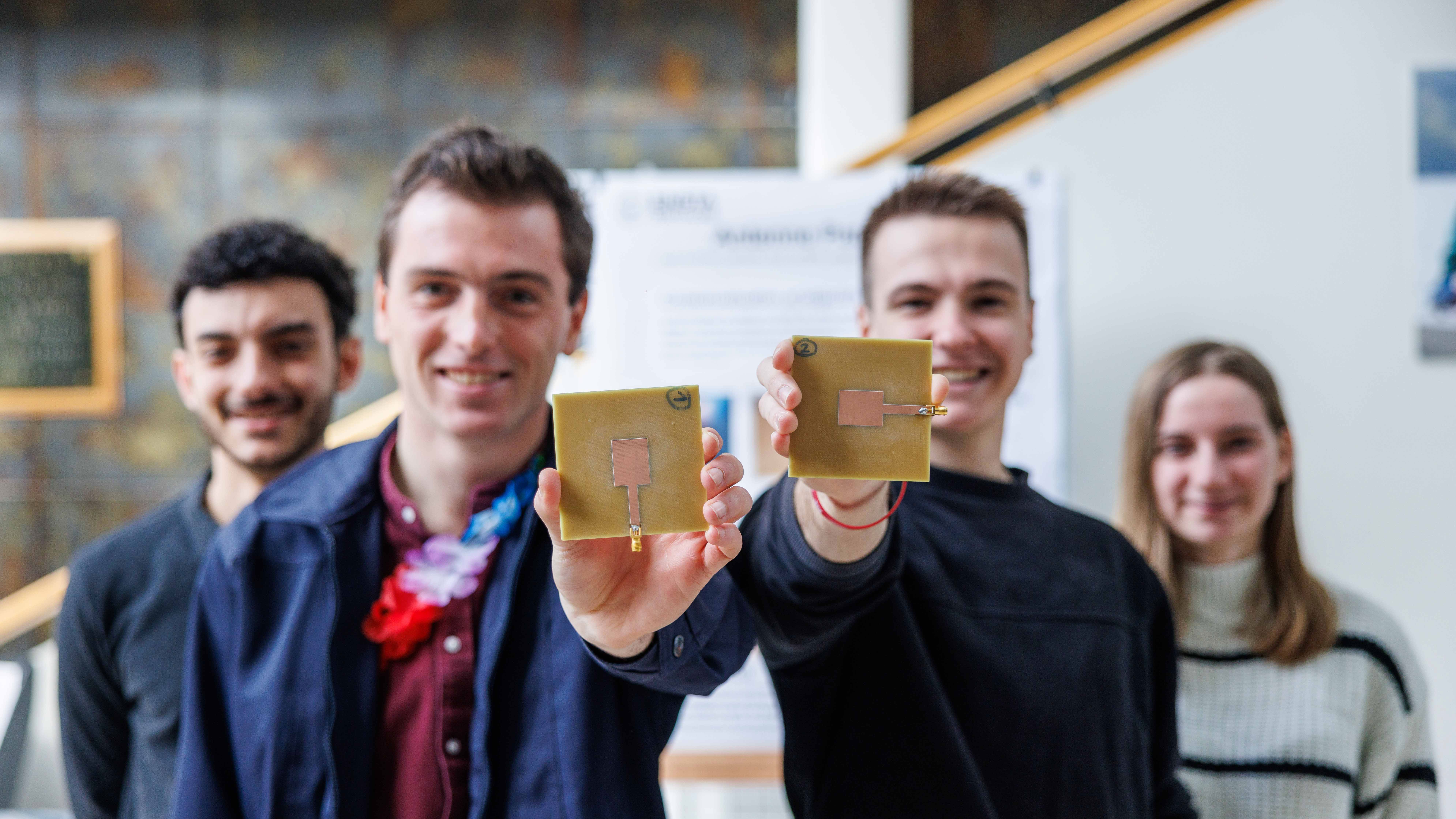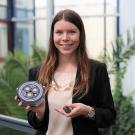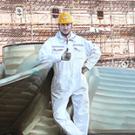
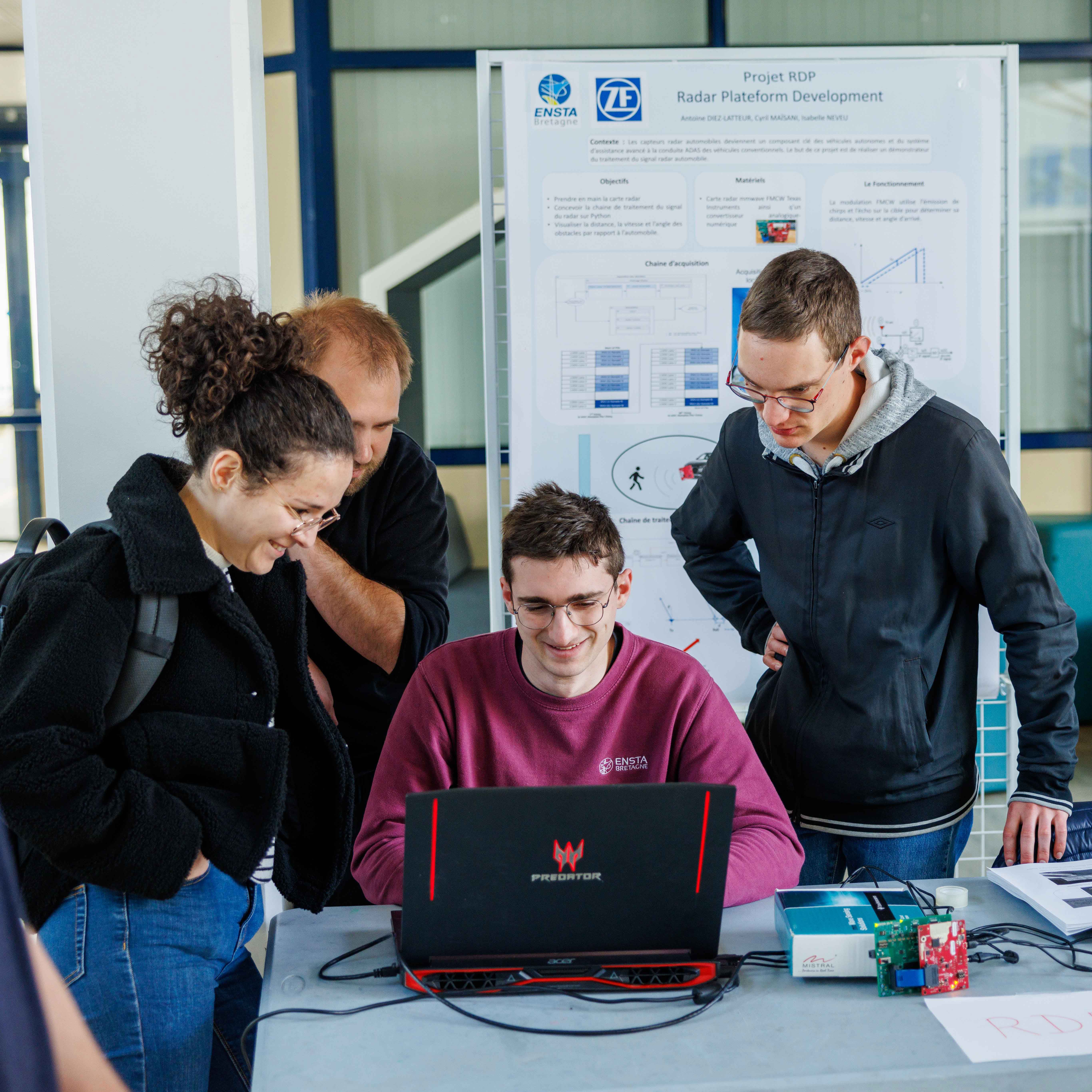
On Tuesday, April 23, the students presented the results of several months of work to a panel of judges. Each group explained their approach to solving the proposed problem using the agile method, the tests they carried out and the initial results they obtained.
Below are a few examples of projects in the areas of Observation Systems and Artificial Intelligence, Digital Systems Design, and Robotics.
CR4 IOT COMPLEX REQUEST FOR INTERNET OF THINGS (IOT)
This project, developed by Raphaël and Goulven, aims to control and automate home automation for the general public through voice commands spoken in natural language.
Our project involves a number of challenges:
- Analyzing the voice commands: French is a subtle language and one voice command can be expressed in many different ways. The system must therefore be able to recognize and understand them.
- Processing complex voice commands, such as: “Open the shutters if the weather is nice”.
The project also aims to develop a system that is compatible with Apple’s HomeKit.
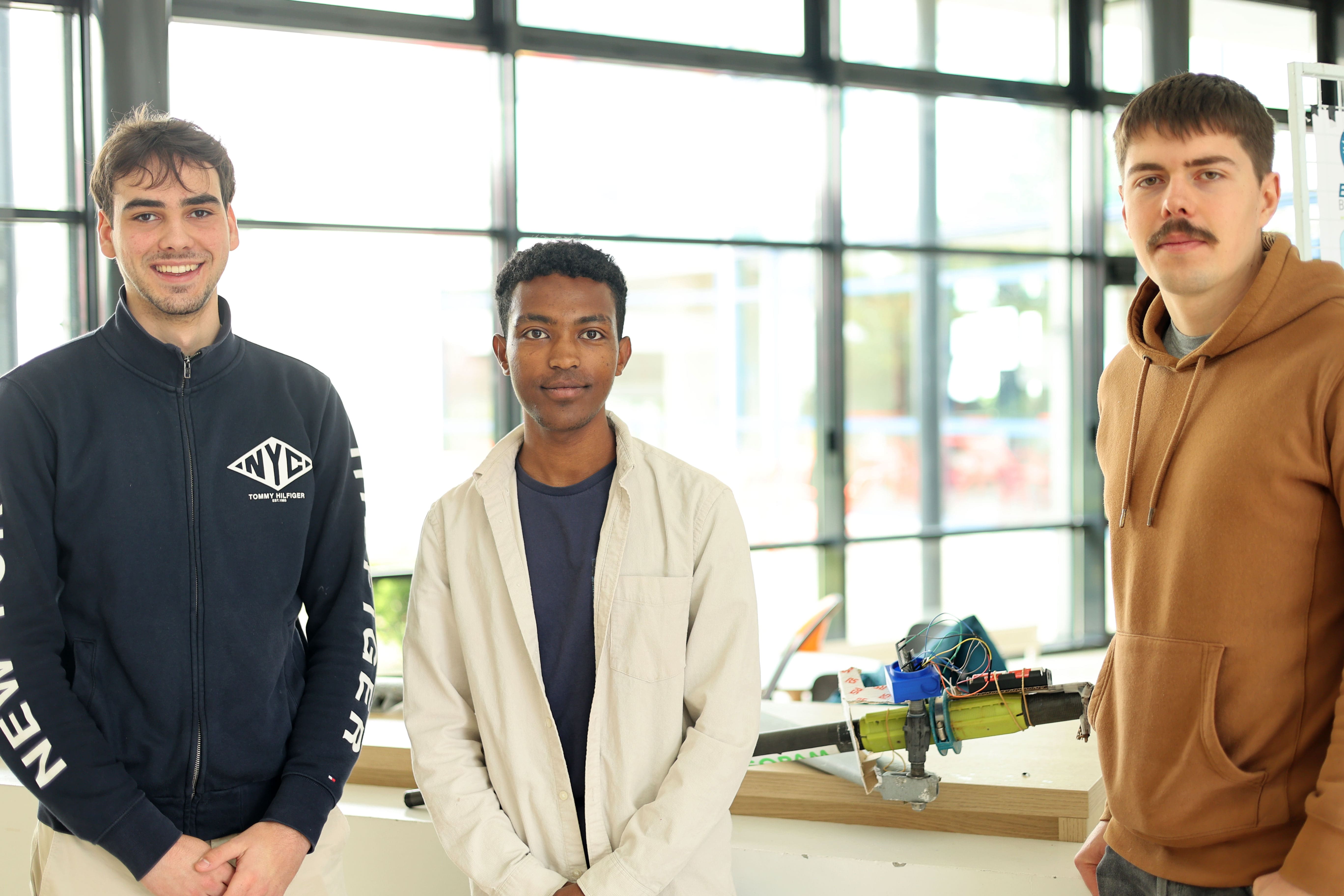
AN ON-BOARD DEVICE FOR OBSERVING ROWERS’ MOVEMENTS
For their project, Baptiste, Raphaël, Pierre and Sébastien worked in collaboration with the Plougonvelin rowing club. The idea was to design a device that would collect data on the rowers' movements and transmit it in real time to an Android application to be used by the coxswain, whose role is to correct the movements of his teammates.
Placed on the oar, our device allows the coxswain to monitor the angle of the oar as well as its speed of movement. We just need to add a protective housing and we'll be able to test it in real-life conditions!
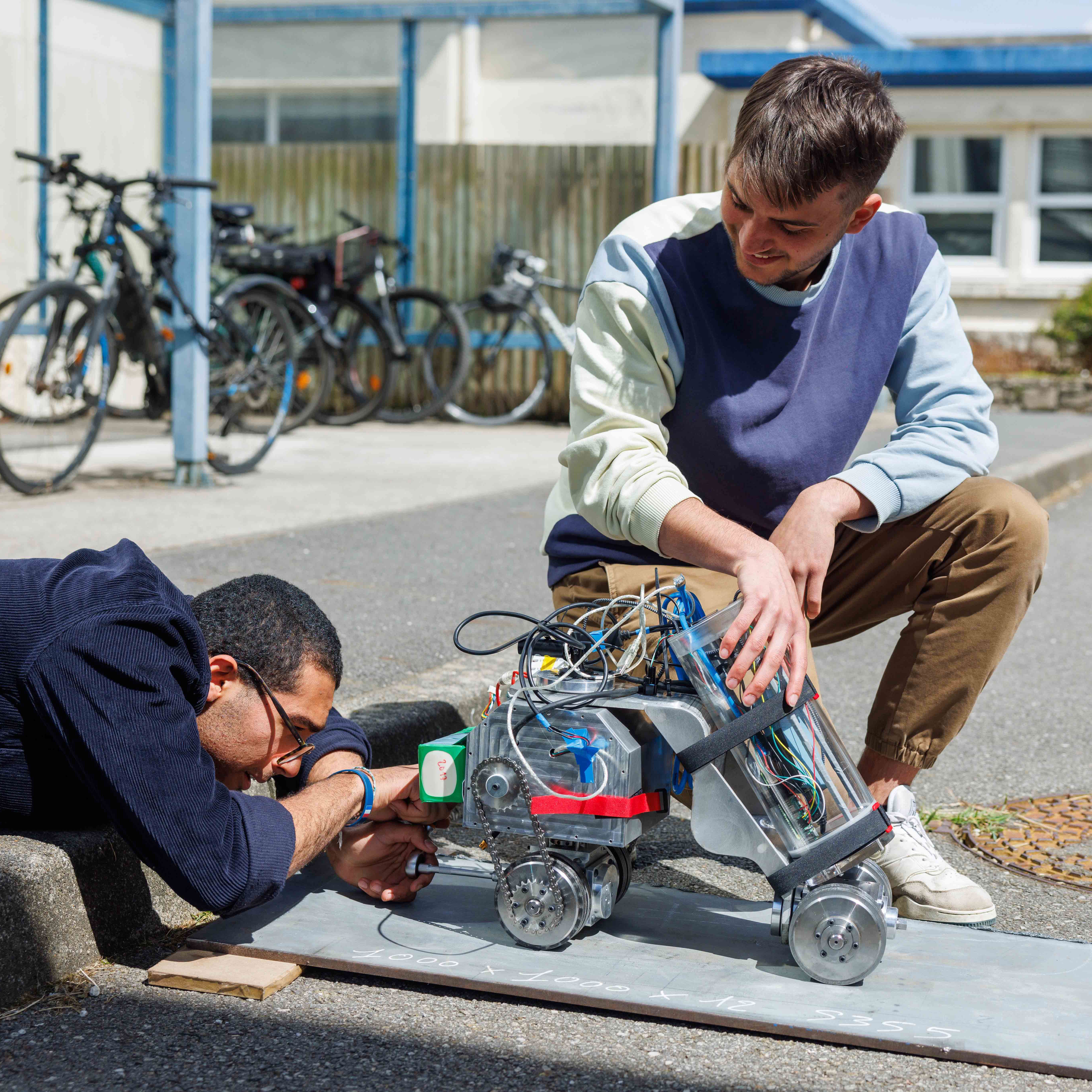
MAGNETIC SEMI-AUTONOMOUS UNDERWATER ROBOT FOR OFFSHORE WIND TURBINES
Five robotics students set out to automate a remotely operated underwater vehicle designed to clean and inspect offshore structures, particularly wind turbines, that are subject to bio-colonization.
After reviewing and automating the robot’s electronics, the group installed a front camera and sensors to capture images and collect data, which are then transmitted to a user interface.
For now, the robot is controlled by wire, but the long-term goal is to automate the robot's movements and also add brushes to ensure efficient cleaning!
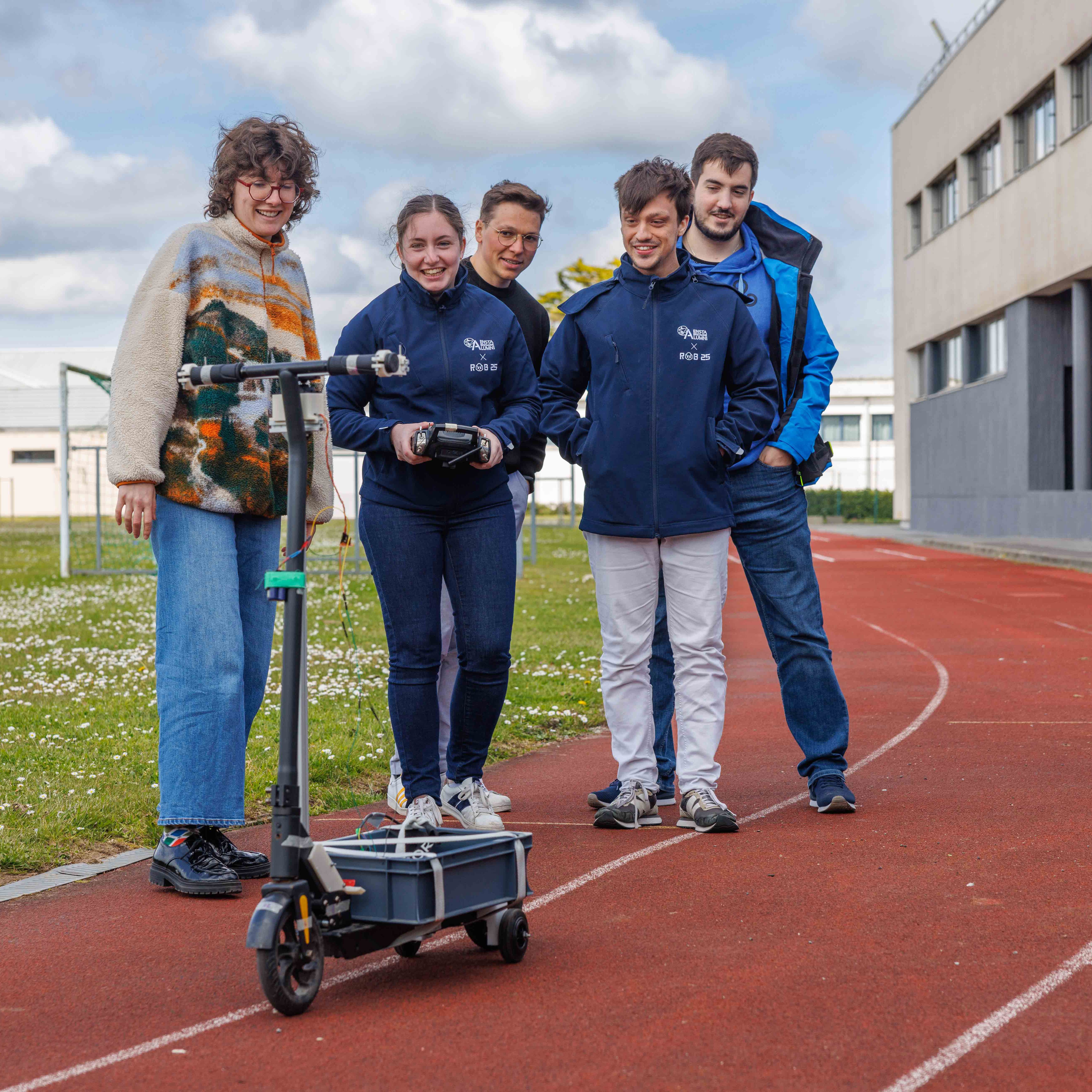
SCOOTER PROJECT
Uncontrolled parking of electric scooters has become a real problem for a number of cities. The aim of this project, led by three students, is to adapt and automate an old scooter so that it can park itself in the right place.
First we had to understand how the electronic part works with the mechanical part, and then how the data is transmitted inside the scooter before we could automate it. The system we have developed is not yet complete, as the scooter is not autonomous, but we have managed to develop a fully functional remote control system.
In the field of mechanics, students also spent several weeks working on a range of industrial problems. The assignments ranged from “electrifying an SNSM rescue boat” to “designing a PET recycling machine” to “characterizing and finalizing a prototype solar tracker”...






